Electric field
Level 0 (green)- this is basic material that you have probably encountered already, although the approach may be slightly different. No prior knowledge is assumed.
Coulomb's electrostatic force is operates between charges even in a vacuum. 19th century scientists found the idea of action at a distance very disturbing, and the concept of an electric field extending into the space surrounding charges was first proposed by Michael Faraday.
The idea that a charge interacts with the electric field surrounding the other charges in the system is a very useful tool for visualising the electrostatic forces.
The electric field at a point may be defined as the electrostatic force that would act on a test charge placed at that point divided by the charge of the test charge.
E = F / q
The field does not depend on the test charge, since according to Coulomb's law F is proportional to q.
The units of the electric field are N C–1, or V m–1.
Since the force is a vector, the electric field is also a vector.
As seen in the previous section, electrostatic forces are additive, and add vectorially.

and since the test charge q is common to all terms in the summation it can be divided out

showing that electric field is additive in the same way as electric force.
| The electric field at the test point is the vector sum of the field from charge 1 and the field from charge 2. |
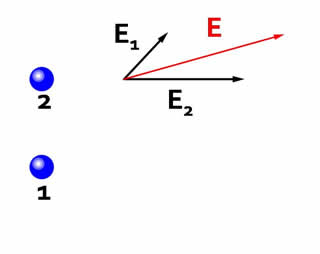 |
Since at every point the electric field is a vector, it is called a vector field.
For an isolated positive point charge the force on a positive test charge is directed away from the centre, and so the field is also directed away from the centre. |
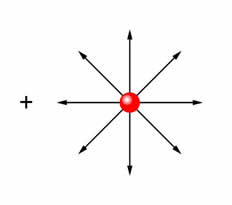 |
| On the other hand for an isolated negative point charge the force on the test charge is in the opposite direction, and so the field is directed towards the centre. | 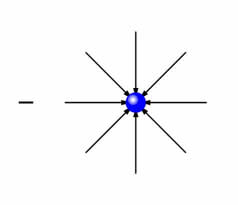 |
These lines, representing the direction of the electric field are called lines of force. They are a very useful way of visualising the electric field.
The electric field is strongest close to the central charge, and this is where the lines of force are densest. The number of lines of force per unit area is proportional to the electric field.
Lines of force (field lines) start on positive charges and end on negative charges. The illustration shows a two charge system containining equal positive and negative charges. |
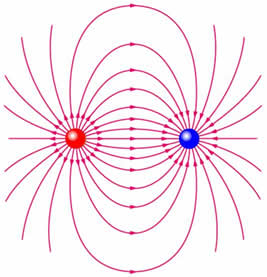 |
Lines of force are continuous and may never cross (otherwise the electric force on a test charge would have two values at the same point). The figure shows a two charge system containing equal positive charges. |
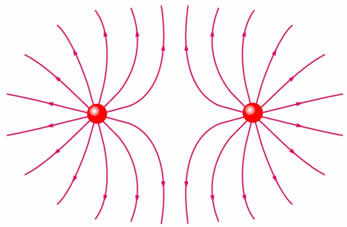 |
Gauss's law for a point charge.
Consider a spherical surface (blue) with a point charge at its centre (red). The field lines emanate radially from the charge and so are perpendicular to the sphere. The field times the surface area of the sphere is This result is an example of Gauss's law. |
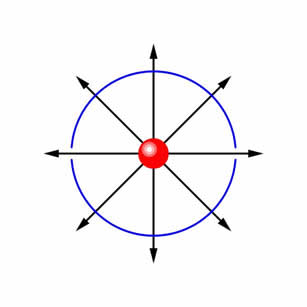 |
